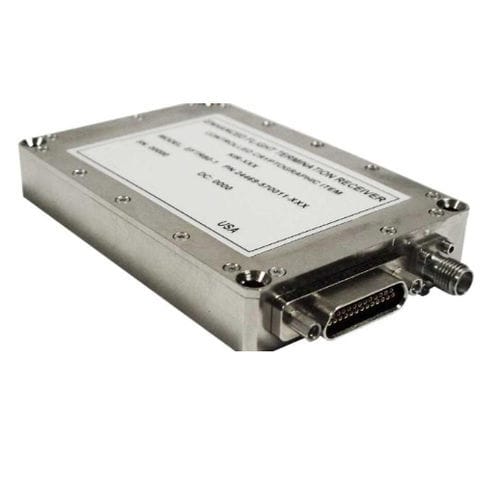
Mode S transponder EFTR80-1for aircraft
Add to favorites
Compare this product
fo_shop_gate_exact_title
Characteristics
- Type
- mode S
- Applications
- for aircraft
Description
The EFTR80-1 Enhanced Flight Termination Receiver (EFTR) the next generation in flight termination receivers that provides superior mission security over legacy FTRs. The EFTR80-1 is an EFTS (Enhanced Flight Termination System) compatible unit designed for Missile, Space Launch, Unmanned Aerial Vehicle (UAV) and Target applications. It is designed for minimum size, weight, and power (SWAP).
The EFTR80-1 utilizes a digital receiver which demodulates a CPFSK signal and decrypts the EFTS messages using the Triple Data Encryption Standard (TDES). This unit meets the requirements of both RCC 319-14 and RCC 325-11. The EFTR80-1 is intended for programs and applications with stringent environmental, EMI, and reliability requirements.
RF Characteristics
Impedance: 50 ohms nominal
VSWR: Less than 2:1
Frequency Range: 420 MHz to450 MHz
Dynamic Range: -107 dBm to +13dBm
Maximum RF input power without damage: +25 dBm
Tuning Accuracy: +/- 0.005%
Threshold Sensitivity: -107 dBm to-116 dBm
Operating Bandwidth: +/- 35 kHz
Deviation Sensitivity: +/- 50 kHz
IF Bandwidth: 3dB @ +/- 90 kHz
Selectivity: 60 dB @+/- 180 kHz
Image Rejection: > 60 dB
Capture Ratio: > 0.8
Decoding Characteristics
FM Demodulation: CPFSK
Data Format: Manchester encoded
Data Rate: 50 Hz Message Rate,7200 bits/sec
Acquisition Time: 60 ms typ. (100ms max)
Command Response Time: < 1 ms
Output Functions
Configuration/Status: Serial RS-232
User Defined: Serial RS-232
Discrete Telemetry: Check Channel, Failsafe Enable, Pulsed Command Valid
SSTO (Signal Strength): No RF0.5Vdc± 0.25Vdc, increasing to 4.5Vdc minimum at -60 to-50dBm input, Maximum voltage; 4.75Vdc ± 0.25Vdc
Catalogs
*Prices are pre-tax. They exclude delivery charges and customs duties and do not include additional charges for installation or activation options. Prices are indicative only and may vary by country, with changes to the cost of raw materials and exchange rates.


